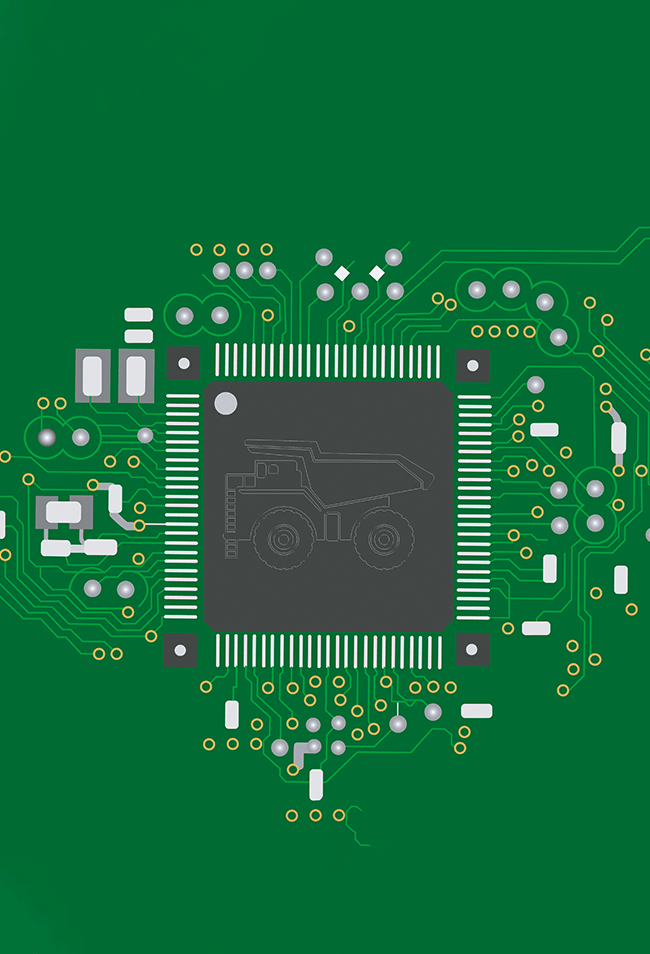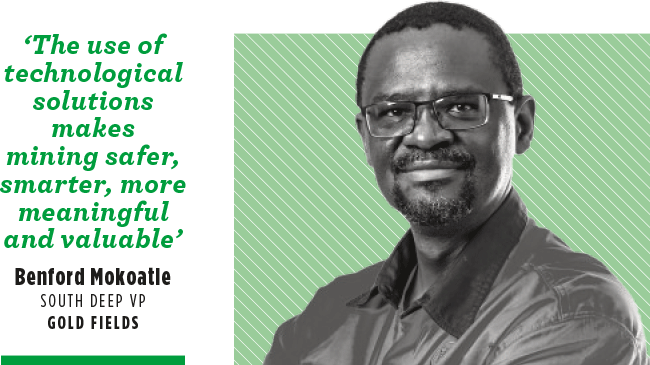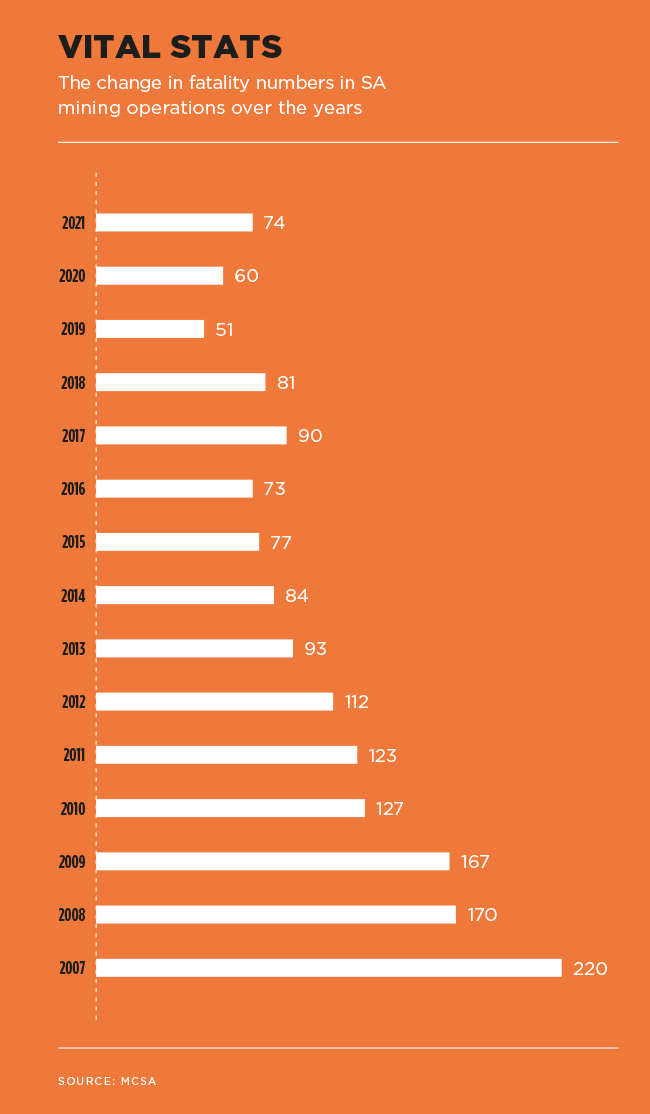The only good news about the SA mining industry’s safety record is that, by the time the Mine Health and Safety Council hosted the Mine Occupational Health and Safety Tripartite summit in mid-October, only 38 work-related fatalities had been recorded for 2022. That represented a significant drop from the 74 recorded in 2021, the 60 in 2020, and even the 51 recorded in 2019. But, of course, those 38 deaths are still 38 too many.
Speaking at the summit, Nolitha Fakude, president of the Minerals Council South Africa (MCSA), said that ‘whenever I receive a call from one of my colleagues notifying me of an incident or fatality, my immediate feelings are always for the families of those we have lost. I then begin to question, are we doing enough? Do these incidents suggest that our programmes aren’t working? And the reality is that many of the people we lose to fatalities are more than just employees and colleagues. They are fathers, mothers, brothers, sisters, caregivers and role models in our communities’.
Just a month before, the MCSA convened an emergency board meeting to address the eight deaths recorded in August. ‘We are fully cognisant of the heartbreak and tragedy that is visited on the families, friends and colleagues of every single person who has died,’ it stated. ‘We affirm our ongoing commitment to the achievement of zero harm in the industry and that our members are proactively addressing the deterioration in safety with all the seriousness and urgency that it deserves.’
That’s in line with the Khumbul’ekhaya health and safety campaign, developed by the mining industry’s CEO Zero Harm Forum to drive and sustain its pursuit of zero harm and zero fatalities. Khumbul’ekhaya (which means ‘remember home’ in Nguni) has targeted a culture transformation framework, hoping to change mineworker behaviour.
As Fakude put it, the mining industry culture is directly correlated to health and safety performance. ‘The example we set through the actions we take or don’t take, and through the conversations we have or don’t have, influences the decisions and actions that are taken on health and safety, every day,’ she said. ‘I believe that our colleagues – whoever they are, and wherever they are – need to know that if they find themselves in a situation where they or their colleagues are at unacceptable risk, they must stop work and ask for help.
‘At present, people die or get injured because they don’t fully appreciate the risks they are exposed to, or because they’re prepared to tolerate them. Or, worse, others might be injured or killed through the concealing of problems in the hope that they will never be noticed. This has to change.’
Consultancy Deloitte agrees. Its report for Australian miners captures four dimensions (which it calls Safety 4.0) that create a ‘safe, sustainable, inclusive, resilient and successful organisation’. These include physical, psychological, cyber and cultural safety.
McKinsey & Co believes mine safety – and profitability – could be enhanced through the deployment of technology. ‘Miners should think holistically – keeping in mind all use cases [as well] as long-term benefits and capabilities – and accelerate the deployment of technology to increase throughput and reduce cost to expand the reserve base,’ it states.
McKinsey cites the example of an international miner that used sensors and machine learning to implement predictive maintenance in its fleet. ‘The model was able to predict when components would fail, enabling an increase of more than 50% in the lifetime of key components.’
It cites another scenario, in which a metal mine used industrial IoT sensors, combined with a centralised data repository and advanced machine learning, to ‘boost chemical recovery from the extraction process by 10% to 15%’. The report also notes that autonomous trucks have ‘made workers safer while reducing fuel usage by 10% to 15%, thus improving environmental performance by 13% while making sites and local areas less hazardous’.
In SA, Gold Fields’ South Deep gold mine is a prime example of a mine that has improved its production, profitability and safety through mechanisation. The mine’s surface control centre, for example, serves as its digital nerve hub. Here all processes, targets, achievements and potential bottlenecks are visible at any point in time from a single, central location, allowing the mine’s operations team to quickly resolve any issues that may arise.
Since being redesigned as a fully mechanised mine, South Deep has almost doubled its after-tax profitability (delivering $70.8 million in H1/22). That remarkable turnaround has caught the attention of several industry commentators. According to Benford Mokoatle, VP of South Deep, ‘the use of technological solutions makes mining safer, smarter, more meaningful and valuable. Our employees are upskilled and provided with the necessary training and skills to perform their jobs optimally in a safer environment’.
Elsewhere, the Mandela Mining Precinct’s Mechanised Mining Systems (MMS) research programme recently tested and proved the effectiveness of its real-time monitoring regime for ventilation on demand at Siyanda’s Bakgatla platinum mine.
The MMS programme aims to develop solutions that will lead to the increase of economically feasible gold, PGM and chrome orebodies, while at the same improving safety at SA mines.
The ventilation-on-demand system allows the control room to remotely increase or decrease ventilating air while monitoring all thermal conditions (including the life-supportive status of refuge chambers). By monitoring the in situ condition in real-time, and with the support of hazard alarm notification and people and equipment tracking, the mine’s control room operator can proactively respond with preventative measures to reduce risk to people, the environment and equipment.
Technology on its own can only achieve so much, though. The consensus among mining leaders is that safety needs to be embedded in the industry culture, and – as the MCSA’s Khumbul’ekhaya campaign frames it – the industry must adopt ‘a holistic approach, because fatalities are often the result of a complex set of circumstances’.
The 38 deaths – and several hundred injuries – recorded from January to October 2022 may be an improvement on previous years’ figures, but the industry remains far from its goal of zero harm.
Speaking at the 2022 Mining Indaba, President Cyril Ramaphosa made the challenge very clear. ‘The growth and development of mining in South Africa will not be possible unless the working and living conditions of mineworkers and mining communities are improved,’ he said.
‘It’s vital that mine safety and the health of workers become the industry’s foremost concern. On this there can be no compromise.’










